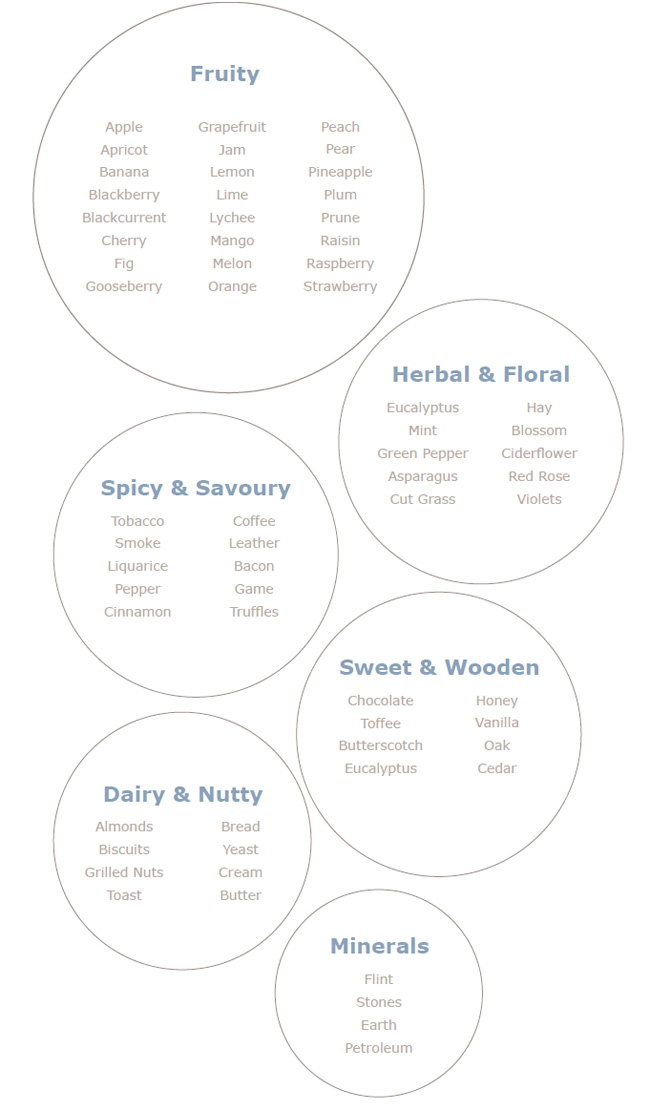New to wine?
Aromas of wine

The delectable beauty of a wine resides in its aromas. The human tongue is limited to the primary tastes perceived by taste receptors on the tongue: acidity, bitterness, saltiness, sweetness and savouriness. The wide array of fruit, earthy, floral, herbal, mineral and woodsy flavours perceived in wine are derived from aroma notes interpreted by the olfactory bulb.
Here are some commonly found tastes for each of the most common varieties (bear in mind that growing region, harvesting decisions and other production decisions have a great impact on a wine’s aromas):
- Cabernet: Blackcurrant, cherry, other black fruits, green spices
- Merlot: Plum, red and black fruits, green spices, floral
- Zinfandel: Black fruits (often jammy), black spices
- Syrah: Black fruits, black spices (especially white and black pepper)
- Pinot Noir: Red fruits, floral, herbs
- Chardonnay: Tropical fruits, citrus fruits and melon in warm regions.
- Sauvignon Blanc: Grapefruit, white gooseberry, lime, melon
Note that:
- Malolactic fermentation – the natural or artificial introduction of specific bacteria – will cause white wines to taste creamy or buttery. With increasing proportion of malolactic fermentation, Chardonnay takes on creamy notes with apple, pear, peach, or apricot overtones.
- Aging in oak will cause wines to take on a vanilla or nutty flavour.
- Other common taste descriptors are minerality, earthiness and asparagus.
Wine Aromas





